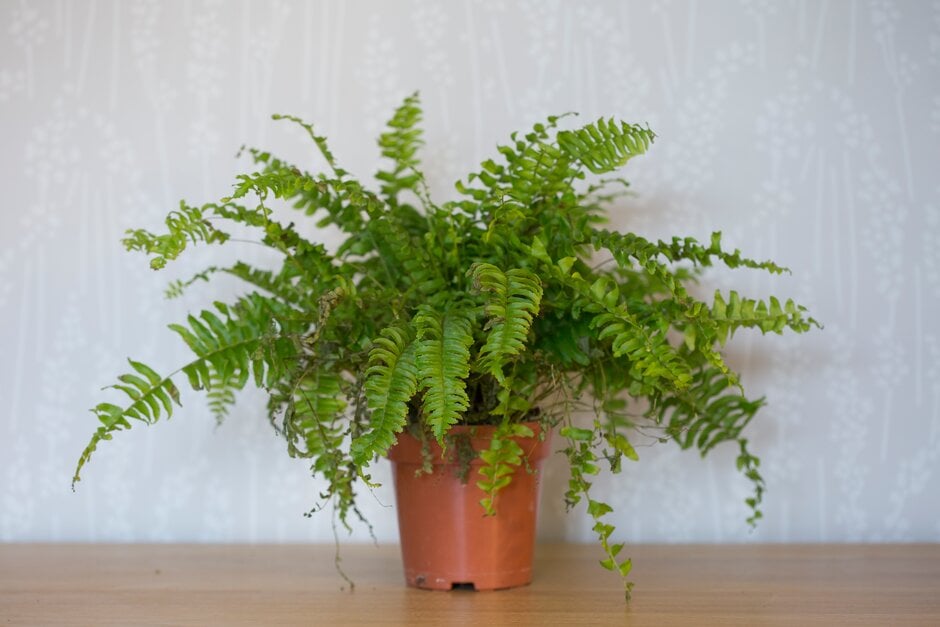Nephrolepis exaltata 'Bostoniensis'
sword fern 'Bostoniensis'
An evergreen, frost-tender fern with an upright, spreading habit growing to 90cm tall and wide. The broadly lance-shaped, pinnate fronds grow upright initially before arching and then drooping with age. Good for air purification
Size
Ultimate height
0.5–1 metresTime to ultimate height
2–5 yearsUltimate spread
0.5–1 metresGrowing conditions
Moisture
Moist but well–drainedpH
Acid, NeutralColour & scent
| Stem | Flower | Foliage | Fruit | |
| Spring | Green | |||
|---|---|---|---|---|
| Summer | Green | |||
| Autumn | Green | |||
| Winter | Green |
Position
- Partial shade
Aspect
North–facing or West–facing or East–facing
Exposure
Sheltered Hardiness
H1BBotanical details
- Family
- Lomariopsidaceae
- Native to GB / Ireland
- No
- Foliage
- Evergreen
- Habit
- Bushy
- Genus
Nephrolepis are rhizomatous, sometimes stoloniferous, evergreen ferns with narrow, pinnately divided fronds, broader and more highly dissected in many cultivars
- Name status
Accepted
How to grow
Cultivation
Grow indoors or under glass in a peat-free multipurpose compost or a mix of 1 part loam, 2 parts sharp sand and 3 parts leaf mould, in bright filtered light, with moderate to high humidity and good ventilation. During the growing season, water moderately with soft water and apply a half-strength balanced liquid fertiliser monthly. Water sparingly in winter. Fronds can rot if they become too wet. See how to grow ferns as houseplants for further advice
Propagation
Propagate by spores, sow spores at 21°C as soon as ripe; resulting plants may not come true. Separate rooted runners in late winter or early spring
Suggested planting locations and garden types
- Houseplants
- Patio and container plants
- Conservatory and greenhouse
Pruning
Remove any dead fronds
Pests
Can suffer from scale insects
Diseases
May be susceptible to rot if fronds become too wet
Get involved
The Royal Horticultural Society is the UK’s leading gardening charity. We aim to enrich everyone’s life through plants, and make the UK a greener and more beautiful place.
